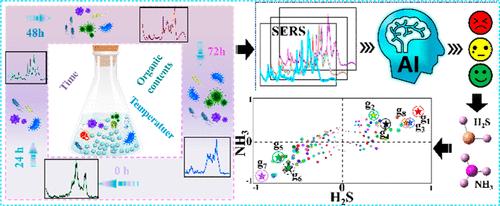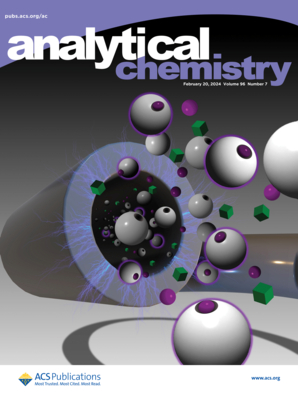SERS-AI Based Detection and Bioanalysis of Malodorous Components in Kitchen Waste
IF 6.7
1区 化学
Q1 CHEMISTRY, ANALYTICAL
引用次数: 0
Abstract
The prevention and control of odor gas generated from kitchen waste are significant missions in research on environmental pollution. Because of the high complexity and variability of kitchen waste, the development of a suitable technique with high sensitivity for the accurate detection of odor gas is an urgent and core task in this frontier field. Here, a technique combining surface-enhanced Raman spectroscopy (SERS) and artificial intelligence (AI) is explored for detecting malodorous components in the leachate of kitchen waste. Initially, 1706 SERS spectra were collected from synthetic kitchen waste under various fermentation parameters. Several AI algorithms were used to classify three levels of odor intensity based on SERS spectra, among which the Random Forest Classifier algorithm model showed a high prediction accuracy of 86.5%. Then, by integrating Raman data, the AI algorithm model identified hydrogen sulfide (H2S) and ammonia (NH3) as the dominant malodorous components in the odor gas. Finally, the structural characteristics of the microbial communities are investigated. With the help of Raman’s intensities of malodorous components, many more insights into microorganisms in the fermentation process are revealed, which has important research value in the prevention and controlling of odor gas generated from kitchen waste. Furthermore, the microbial metabolic pathways of sulfur and nitrogen are discussed here. This SERS-AI-based novel technique not only has a broad potential for odor pollution but also could be applied to another complicated biochemical system with functional bacteria.

基于 SERS-AI 的厨房垃圾中恶臭成分的检测和生物分析
预防和控制餐厨垃圾产生的恶臭气体是环境污染研究的重要任务。由于餐厨垃圾的复杂性和多变性,开发一种合适的高灵敏度技术来准确检测异味气体是这一前沿领域的核心任务。本文探索了一种结合表面增强拉曼光谱(SERS)和人工智能(AI)的技术,用于检测餐厨垃圾渗滤液中的恶臭成分。最初,在不同的发酵参数下,从合成厨余垃圾中收集了 1706 个 SERS 光谱。利用几种人工智能算法根据 SERS 光谱对气味强度进行了三级分类,其中随机森林分类器算法模型的预测准确率高达 86.5%。然后,通过整合拉曼数据,人工智能算法模型确定硫化氢(H2S)和氨(NH3)是恶臭气体中的主要恶臭成分。最后,研究了微生物群落的结构特征。在拉曼恶臭成分强度的帮助下,对发酵过程中的微生物有了更多的了解,这对预防和控制餐厨垃圾产生的恶臭气体具有重要的研究价值。此外,本文还讨论了硫和氮的微生物代谢途径。这项基于 SERS-AI 的新技术不仅在恶臭污染方面具有广阔的应用前景,而且还可以应用于另一个复杂的功能细菌生化系统。
本文章由计算机程序翻译,如有差异,请以英文原文为准。
求助全文
约1分钟内获得全文
求助全文
来源期刊

Analytical Chemistry
化学-分析化学
CiteScore
12.10
自引率
12.20%
发文量
1949
审稿时长
1.4 months
期刊介绍:
Analytical Chemistry, a peer-reviewed research journal, focuses on disseminating new and original knowledge across all branches of analytical chemistry. Fundamental articles may explore general principles of chemical measurement science and need not directly address existing or potential analytical methodology. They can be entirely theoretical or report experimental results. Contributions may cover various phases of analytical operations, including sampling, bioanalysis, electrochemistry, mass spectrometry, microscale and nanoscale systems, environmental analysis, separations, spectroscopy, chemical reactions and selectivity, instrumentation, imaging, surface analysis, and data processing. Papers discussing known analytical methods should present a significant, original application of the method, a notable improvement, or results on an important analyte.
 求助内容:
求助内容: 应助结果提醒方式:
应助结果提醒方式:


